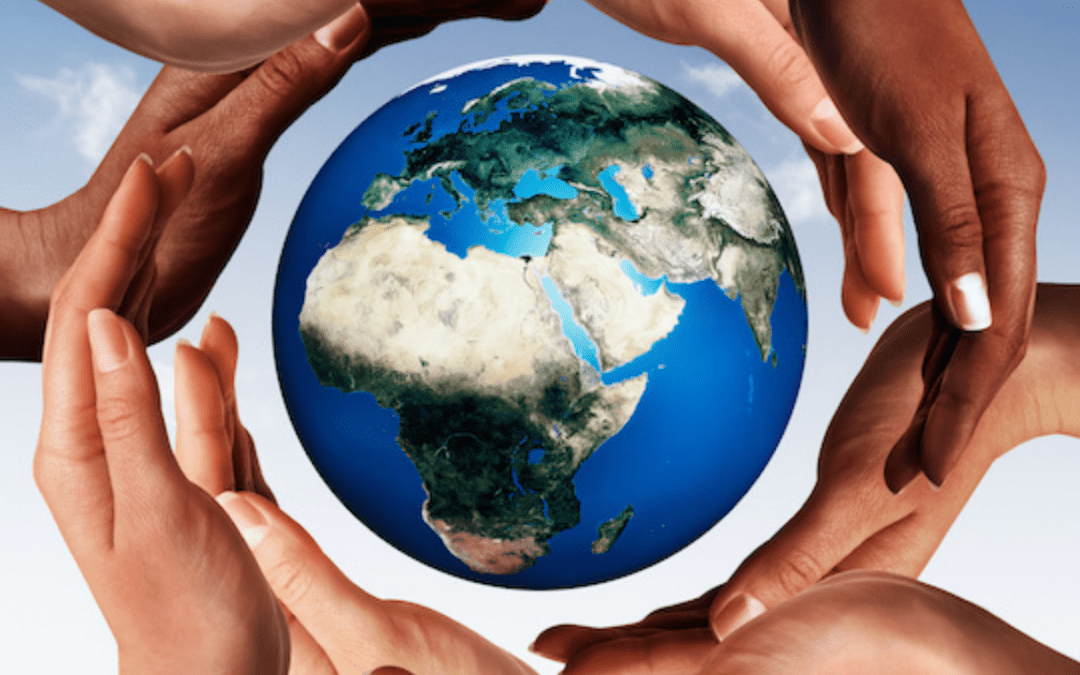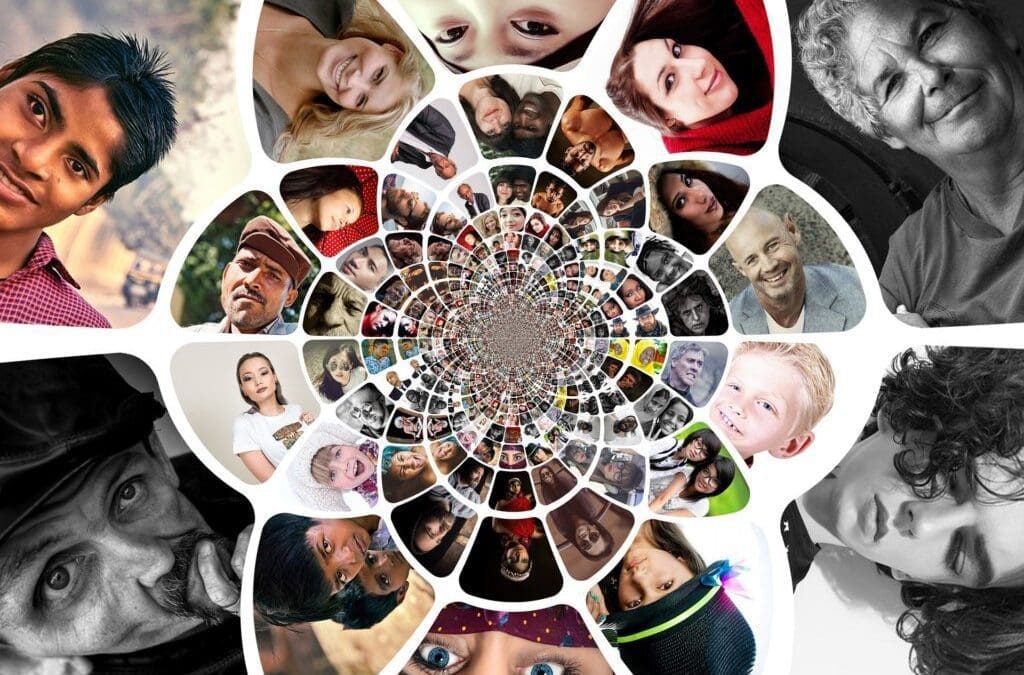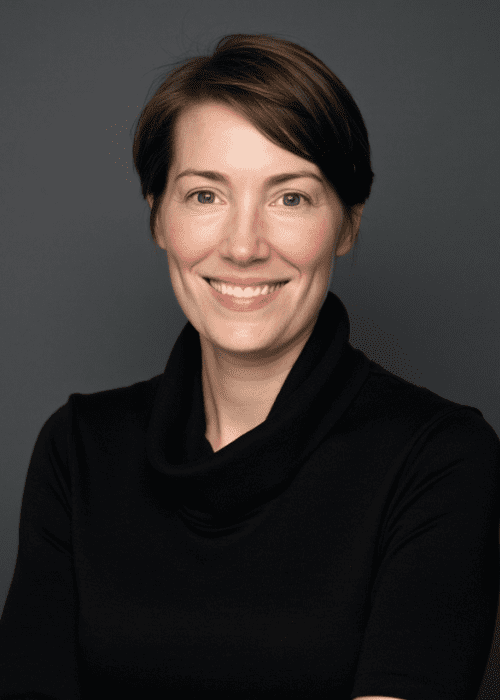
by Lawrence Wittner | Jul 28, 2025 | Global Cooperation
At a time when international cooperation provides the key to preventing a variety of global calamities―including nuclear war, climate catastrophe, and massive starvation―it’s tragic that major nations, ruled by nationalist, rightwing parties, are on a collision course with the organizations that represent the international community.
Chief among these international organizations is the United Nations, with a Charter that bans “the threat or use of force against the territorial integrity or political independence of any state.” Nevertheless, ignoring this ban, the Russian government has engaged since February 2022 in a massive military invasion and occupation of Ukraine, the Israeli government has continued a brutal occupation and military bombardment of Gaza, and the President of the United States has ordered the bombing of Iran and talked glibly of seizing Gaza, Greenland, and the Panama Canal.
These same nations have refused to comply with or stymied the mandates of numerous key international organizations.
The Russian government has refused to abide by the February 2022 ruling of the International Court of Justice that Russia cease its military invasion of Ukraine immediately, has defied repeated votes by the UN General Assembly condemning its invasion, occupation, and annexation of Ukraine, and has rejected compliance with an International Criminal Court arrest warrant for Russian President Vladimir Putin for his regime’s kidnapping of Ukrainian children. In the UN Security Council, Russia used its veto to frustrate international denunciation of its war on Ukraine and condemnation of Russian annexation of Ukrainian territory.
The Israeli government has spurned vast numbers of UN General Assembly resolutions calling for fair treatment of Palestinians and an end to Israeli occupation of their land or to honor the International Criminal Court’s arrest warrant for Prime Minister Benjamin Netanyahu for war crimes against humanity in Gaza.
For its part, the U.S. government, under the new administration of Donald Trump, belittled the United Nations, pulled the United States out of the World Health Organization, abandoned the UN Human Rights Council, suspended U.S. payment for the UN Relief and Works Agency for Palestine Refugees, and announced a review of its membership in the UN Educational, Scientific, and Cultural Organization. It also employed its veto to block passage of a UN Security Council resolution demanding a permanent ceasefire in Gaza.
The fervent resistance of these governments to international authority is illustrated by their vehement responses to the work of the International Criminal Court (ICC), a global juridical entity endorsed by 125 nations. In Russia, the government opened criminal cases against the prosecutor and judges of the court, while former President Dmitry Medvedev publicly threatened to target the court with missile strikes. In Israel, Prime Minister Netanyahu fiercely denounced the ICC warrant for his arrest as an “antisemitic act” by a corrupt prosecutor and biased judges. In the United States, President Trump issued an executive order in early February 2025 imposing economic and travel sanctions against the ICC prosecutor, establishing a framework for imposing additional sanctions on ICC officials, and directing the U.S. officials to submit the names of other individuals to be targeted.
Indeed, the Trump administration has launched an all-out attack on the work of international institutions, especially the United Nations. In February, Trump ordered a six-month review of U.S. membership in all international organizations, conventions, and treaties with a view toward reducing funding, ending funding, or simply withdrawing from them. This review included a critical examination of the United Nations, with the result that the administration’s 2026 budget proposal reduced UN funding by 87 percent. This draconic UN budget cut will drastically undermine the World Food Program, assistance to children (e.g. UNICEF), refugee, migration, disaster relief, family planning, and economic development programs, the International Court of Justice, the International Atomic Energy Agency, and UN peacekeeping missions, with disastrous consequences. Global starvation, for example, is now widespread, with acute hunger confronting 343 million people in 74 nations.
Meanwhile, in Congress, Republican legislators have introduced bills in the Senate and the House to terminate U.S. membership in the United Nations and affiliated institutions. Representative Chip Roy of Texas, a MAGA stalwart, declared that it was time to dissociate the United States from “this corrupt globalist organization.”
Despite these attacks and a retreat from international responsibility by other nations, it remains possible that international organizations can weather the rightwing, nationalist storm. At the United Nations, Secretary-General António Guterres has been working to modernize and streamline the UN system’s structure, priorities, and operations to meet the new challenges it faces. Nevertheless, given the need to reduce the UN core budget by 20 percent, his new UN80 reform plan does call for thousands of job cuts.
A more promising solution to the problems created by nationalist ideologues in major nations is for other nations to pick up the slack in supporting international institutions. The European Union (EU) is particularly well positioned to assume this role, for it generally favors multilateral action to address global challenges. And it also possesses substantial financial resources. Together with Britain and some potential non-Western partners, such as Japan and South Korea, the EU could substitute for the United States in bolstering the United Nations and other organizations that now provide the rudiments of cooperative global governance.
In addition, it’s certainly possible that, given the inability of governments with a narrow nationalist approach to effectively address contemporary global problems, they will sooner or later be replaced by governments better able to cope with the modern world.
Of course, the League of Nations and the hope of international cooperation were destroyed in the 1930s thanks to the rise of rightwing, hyper-nationalist regimes, and a comparable process might be unfolding today.
Even so, with the onset of World War II, most people finally realized that narrow nationalism had to give way to global cooperation. Let’s hope that it won’t take another world war or comparable catastrophe to convince people again.

by Allen Pietrobon | Jul 9, 2025 | Global Cooperation
In the aftermath of the U.S. government’s military strikes against Iran’s nuclear facilities, it is easy to assume that Iran and the United States will never come to diplomatic terms over Iran’s nuclear future. President Donald Trump reportedly decided to launch the strikes partly because he had become increasingly frustrated with Iran for not responding to the latest proposal for a nuclear deal.
Iran, for its part, claimed that it would never abandon its right to enrich uranium for domestic purposes. But at least they were still talking. Now, in response to the American military attacks, Iran’s top diplomat has said that the United States had “decided to blow up diplomacy,” and the next scheduled round of nuclear talks was canceled.
The prospect of Iran developing a nuclear weapon is a grave danger that, like other nuclear perils, needs to be taken seriously. But history has shown that even in moments of maximum danger, when the world seems perched on the edge of a wider war, diplomatic solutions are possible.
The parallels to another historical moment are telling. Before the Cuban Missile Crisis in October 1962, the U.S. government had been negotiating with the Soviet government for over six years to get a nuclear test ban treaty signed that would put major constraints on the testing and development of nuclear weapons.
When the Missile Crisis began, Soviet Premier Nikita Khrushchev called U.S. President John F. Kennedy’s announcement of a naval blockade (technically, an act of war) “outright banditry . . . the folly of degenerate imperialism.” He declared that “the Soviet Union cannot fail to reject the arbitrary demands of the United States.”
Similarly, Iranian Foreign Minister Abbas Araghchi has called the attacks on Iran “barbarous” and claimed that the U.S. government had acted in such a way as to make further nuclear talks “meaningless.”
And yet, back in 1962, the U.S. and Soviet Union, despite being just one mistake or miscalculation away from blundering into a global nuclear war, managed to work together to negotiate a diplomatic end to the crisis. Indeed, the year between the Cuban Missile Crisis in October 1962 and the ratification of the Limited Nuclear Test Ban Treaty in October 1963 witnessed one of the most unexpected reversals in international conflict during the entire Cold War.
The first overture came on December 19, 1962, when Khrushchev, breaking with years of hardline diplomacy, dispatched a letter to Kennedy offering to move forward with a treaty to ban the testing of nuclear weapons. It was the first direct contact between the two leaders in nearly two months.
Hoping to capitalize on this positive diplomatic opening, Kennedy chose an unorthodox route. Instead of turning to his professional diplomats, bound by protocol and official talking points, he chose to dispatch a private citizen, the prominent journalist Norman Cousins, editor of the Saturday Review, to personally meet with Khrushchev and help clear up the remaining obstacles to a settlement.
During this meeting, Khrushchev explained to Cousins that he was encountering fierce opposition from within his own government in his pursuit of the test ban and that what he needed from Kennedy was a sign that the U.S. government was serious about negotiating in good faith.
Back in the United States, Cousins convinced Kennedy that the moment was at hand for the most important single speech of his presidency — a speech in which, after years of tension, he should take the leap to extend an olive branch to the Soviets.
This speech, delivered on June 10, 1963, at the American University commencement, asked Americans to re-examine their negative attitudes towards the Soviet Union and toward peace in general. “Too many of us think [peace] is impossible,” Kennedy said. “But that is a dangerous, defeatist belief. It leads to the conclusion that war is inevitable.”
He urged Americans to “focus instead on a more practical, more attainable peace,” rather than on a “grand or magic formula to be adopted by one or two powers.” He asked the American people “not to see only a distorted and desperate view of the other side, not to see conflict as inevitable, accommodation as impossible, and communication as nothing more than an exchange of threats.”
Although this American University address is now regarded as one of Kennedy’s most famous speeches, at the time his critics attacked this peaceful diplomatic overture to the Soviet Union as “a soft line that will accomplish nothing” and “a dreadful mistake.” Kennedy could have bowed to the pressure of these critics, but instead he chose to break from the aggressive and intransigent rhetoric of the past and redefine the debate.
The speech provided the show of good faith that Khrushchev was waiting for. As a result, despite years of political deadlock, a treaty to ban the atmospheric testing of nuclear weapons was signed between the two nations less than two months later.
Today, we find ourselves at a similar impasse, opening the door to a wider military confrontation. Military strikes against Iran’s nuclear facilities have done nothing more than buy some time. The question is, what do we do with that time? If unilateral military attacks are going to erupt every time a government leader thinks an unfriendly country is developing nuclear weapons, we are entering a very dangerous future, indeed.
Fortunately, history has shown us that, in a moment defined by the overwhelming tensions that nuclear weapons create, sometimes the most powerful weapon of all is the strength of international dialogue and agreement.

by Lawrence Wittner | Mar 6, 2025 | Global Cooperation
The recent whirlwind of the incoming United States (U.S.) administration’s foreign policy measures―many reversing those of the previous administration―illustrates the fact that Americans have sharply different opinions about their relationship to other nations.
The current president’s approach―which he has labeled “America First”―is clear enough. He has blocked U.S. humanitarian assistance abroad by shutting down the U.S. Agency for International Development, twice pulled the United States out of the Paris climate agreement, and scrapped numerous nuclear arms control and disarmament accords (including the Iran nuclear agreement, the Open Skies Treaty, and the INF Treaty). Taking a hard line against the foreign-born for their alleged criminality and “poisoning the blood” of Americans, he has suspended refugee asylum in the United States and begun the process of arresting and deporting 11 million migrants.
This vision of America’s role in the world relies upon a vast U.S. military buildup and tariff wars to coerce other nations into line with his aims. Indeed, he has even blatantly championed old-fashioned imperialist expansion by calling for annexing Greenland, Canada, the Panama Canal, and Gaza―the latter to be purged of its Palestinian population. Not surprisingly, his administration has shown particular contempt for international organizations, promising a crackdown on the United Nations and sanctioning the International Criminal Court and its supporters. Recently, he has withdrawn the United States from the World Health Organization and the UN Human Rights Council.
Although it’s doubtful that this mixture of strident nationalism and xenophobia benefits Americans, it does have deep roots in American history. In the nineteenth century, the fledgling U.S. government acquired vast new continental territories thanks to wars and treaties at the expense of indigenous peoples. The largest of these land-grabs included the Mexican War and countless Indian wars. Overseas expansion surged during the late nineteenth and early twentieth century, when the U.S. government colonized and annexed the Philippines, Hawaii, and Puerto Rico and, also, militarily intervened in Mexico, the Caribbean nations, South America, and China. Although the rapidly-growing United States remained open to immigrants during its first century, restrictions on Asian immigrants began in the late nineteenth century. And a discriminatory National Origins Quota System―designed to drastically reduce immigration from Eastern and Southern Europe―was put into place in the early twentieth century.
In the aftermath of World War I, what became known as “isolationism” swept through the United States, ultimately leading the U.S. government to reject membership in the League of Nations and the World Court, as well as to adopt a policy of “appeasement” of the fascist nations, then busy conquering portions of Europe, Africa, and Asia. Even after the Japanese attack on Pearl Harbor brought the U.S. government into World War II and produced growing respect for international law, the U.S. government, during the Cold War years, insisted upon maintaining the world’s mightiest military establishment. Pursuing what was termed “the national interest,” it also engaged in numerous unilateral ventures, including toppling foreign government and waging brutal, vastly destructive wars (such as the one in Vietnam).
But this is only part of the story, for there was always another America―one recognizing that it was just and necessary to move nations beyond national selfishness to global cooperation. This tendency might be called “Global Community.”
After all, the U.S. government did play a major role in initiating the League of Nations and, ultimately, in moving beyond isolationism (and its leading advocate, the America First Committee) and defeating the fascist powers. It also played a very significant part in establishing the United Nations, appropriately headquartered in America’s largest city. Just as, in the years before World War II, the American government terminated its occupation regimes in Caribbean nations, so, after the war, it ended its postwar occupation regimes in European and Asian nations. To aid in postwar European recovery, it created the Marshall Plan, a massive economic aid program that played a key role in reviving war-torn Western Europe. After the establishment of the United Nations, the U.S. government became its leading funder, promoting the international organization’s worldwide international security, humanitarian, and health programs.
Nor was this all. In the postwar years, the U.S. government supported the termination of colonial regimes by the European colonial powers that had ruled much of Africa and Asia, thereby dramatically increasing the number of independent nations. Meanwhile, it swept away the previous U.S. discriminatory immigration system, resulting in a more multicultural society. Although the U.S. government continued to engage in great power confrontation during the Cold War, it eventually accepted that conflict’s peaceful termination through international agreements. These included very significant nuclear arms control and disarmament treaties―treaties that did not give primacy to America or any other country. Some years later, the Obama administration followed up by pressing, albeit unsuccessfully, for the creation of a nuclear weapons-free world. Furthermore, determined to tackle the growing global climate crisis, it signed the Paris climate accord.
How did it happen that these two quite different approaches to the world developed in the policies of the same nation?
The answer appears to lie in the fact that America’s relationship to the world has always been contested terrain. From the Know Nothings, to the Ku Klux Klan, to the current nativist movement, the United States has always contained plenty of people hostile to foreigners and celebrating a mythical “Americanism.” And there have also been plenty of people―from the League of Universal Brotherhood, to the United Nations Association, to Citizens for Global Solutions―who have argued that we’re all in this together.
At present, the America Firsters are clearly in control of the U.S. government. But, of course, the future is never predictable. Indeed, it’s quite possible that there will be a revival of the impetus to build a global community—one that can address the world’s problems and even, perhaps, overcome them.
That would be a great day for both America and the world.

by Lawrence Wittner | Nov 22, 2024 | Global Cooperation
The latest rollout of the hyper-nationalist “America First” policy underscores the world’s long-term slide toward catastrophe.
Within nations, when conflicts inevitably erupt, there are laws, as well as police, courts, and governments that enforce the laws.
On the global level, however, governance is quite limited. The UN Security Council, responsible under the UN Charter for maintaining international peace and security, is frequently hamstrung by the veto, which the five great powers of 1945 insisted upon according to themselves. By this April, it had been employed 321 times. Although the International Court of Justice and the International Criminal Court deliver legally binding judgments, based on international law, such judgments are not always obeyed. The UN General Assembly votes on key international issues as well, but such votes are merely advisory. Consequently, these international organizations issue laudable statements, while the most powerful nations all too frequently defy them and go on their merry, marauding way.
The Russian government is currently continuing its massive military invasion of Ukraine and annexing its territory while ignoring the demands of the UN General Assembly and the International Court of Justice to end Russia’s aggression and withdraw from Ukraine. Similarly, the Israeli government ignores the demands of these world organizations to end its brutal war upon and occupation of Palestine.
From the overwhelming votes in the UN General Assembly to condemn the Russian and Israeli invasions, we can see what most of the world’s nations want done to address these terrible situations. But there is no implementation of their demand to respect international law―law that lacks effective international enforcement.
Over the course of human history, this international lawlessness has contributed to a might-makes-right approach to world affairs, in which militarily powerful nations play the dominant role. Naturally, then, nations have gravitated toward military buildups, making some very powerful, indeed.
According to the Stockholm International Peace Research Institute, the top military spenders in 2023 (the latest year for which figures are available) are the United States ($916 billion), China ($296 billion), Russia ($109 billion), and India ($84 billion). But others―Israel ($28 billion) and North Korea (amount unknown)―also rank among the big-time military spenders. All told, the nations of the world devoted at least $2,443 billion to war and preparations for war, an increase over the previous year of nearly 7 percent.
Military spending is not the only way to measure militarism. The Global Peace Index 2024, compiled by the Institute for Economics and Peace, used the level of societal safety and security, the extent of ongoing domestic and international conflict, and the degree of militarization to examine 163 independent nations and territories. Not surprisingly, the major military powers ranked low on the scale of peacefulness, including China (88th), India (116th), the United States (132nd), North Korea (152nd), Israel (155th), and Russia (157th).
By contrast to these military behemoths―possessing the mightiest military forces in world history, including arsenals of nuclear weapons―the United Nations has remained a relatively anemic organization, speaking truth but lacking power.
Sometimes, the major military powers cope with the explosive global situation by making deals with one another―although such deals rarely create the basis for a peaceful world. For example, the August 23, 1939 Molotov-Ribbentrop Pact (better known as the Nazi-Soviet Pact) provided for détente between Nazi Germany and the Soviet Union, two highly-militarized nations that had previously been at odds. In this secret protocol, Hitler and Stalin agreed to share Poland and give Lithuania, Latvia, Estonia, Finland, and other East European territories to the Soviet Union. On September 1, Germany invaded western Poland, thereby beginning World War II. Soon thereafter, the Soviet Union took action to seize its share of the spoils. As early as July 1940, however, the German High Command began planning its invasion of the Soviet Union, which occurred the following June, ending this cozy arrangement.
On other occasions, major military powers have formed alliances. Wary of a military attack by their rivals or eager to bolster their strength for a military attack upon them, these “great powers” have enhanced their military might by creating military alliances with weaker nations. The weaker nations, for their part, sometimes seek alliances with the militarily powerful to guarantee their own security.
But alliances, too, have provided a shaky basis for maintaining international peace. During the Cold War, the North Atlantic Treaty Organization (dominated by the United States) and the Warsaw Pact (dominated by the Soviet Union) engaged in remarkably dangerous nuclear confrontations. Furthermore, both alliances experienced serious internal convulsions. In 1956, Hungary withdrew from the Warsaw Pact, leading to a Soviet invasion that slaughtered 2,500 Hungarians and sent 200,000 fleeing abroad.
Today, the traditional system of every-nation-for-itself is leading to disaster. There are currently 56 active military conflicts in the world, the largest number since the end of World War II. These conflicts are also becoming more internationalized, with 92 nations engaged in a conflict beyond their borders. According to the Global Peace Index, “there has been a significant rise in both conflicts and battle deaths in the past two decades, with battle deaths reaching a thirty-year high.”
Overarching this grim toll lies a revived nuclear arms race, increasingly likely to erupt into a nuclear war that will annihilate most life on Earth.
In this situation, there is a desperate need for effective global governance. Or, to put things differently, the world needs a stronger United Nations―strong enough to resolve conflicts among nations and, thereby, maintain international peace and security.
The task of strengthening global governance is difficult, but not impossible. There are ways to limit the use of the veto in the UN Security Council (as championed by many nations), transfer security issues to the UN General Assembly (where there is majority rule and no veto), and increase the jurisdiction of international judicial bodies. It’s also necessary and possible to provide the UN with an independent source of income to fund an expanded range of activities.
The time has come to transform the United Nations into a federation of nations that can effectively uphold international law―a government for the world. With such a government, we would have a much better chance of restraining outlaw nations and averting the nuclear catastrophe that looms before us.

by Sovaida Maani Ewing | May 4, 2023 | Global Cooperation
Lessons Repeat Themselves Until Learned
One of the inescapable features of human existence is that lessons we fail to learn repeat themselves over and over, usually with increasing ferocity until the lesson is learned. This principle applies not only to our individual lives, but to humanity’s collective life as well. One of these global lessons that has been repeating itself with ever-increasing intensity is that localized or regional conflicts have global repercussions.
A good example is the war in Syria, which spawned a number of crises that impacted countries far beyond its border. One of them was the refugee crisis, which affected not only Syria’s immediate Middle Eastern neighbors like Lebanon, Jordan, and Turkey but had far-reaching effects in Europe as well. The wave of refugees washing up on Europe’s shores was a driving force in the rise of right-wing governments in several countries. It was also one of the factors that precipitated Brexit, as the United Kingdom frantically attempted to take control of its own destiny and limit the flow of unwanted refugees to its shores.
The Syrian conflict also created fertile conditions in Syria and Iraq that allowed ISIS to flourish and carry out brutal acts that impacted the citizens of many nations near and far. In addition, the civil war in Syria resulted in the creation of what some of the media referred to as a “proto world war,” as countries arrayed themselves on opposing sides of a widening conflict.
We Missed the Opportunity to Learn from the War in Syria
Unfortunately, the international community failed to grasp the opportunity arising from the conflict in Syria to devise a global mechanism to end the Syrian conflict. It is therefore no surprise that one of the most pressing conflicts of the day, Russia’s war against Ukraine, has left our global leaders paralyzed, dithering, taking half-measures and seemingly unable to take the kind of decisive and effective action that would have nipped it in the bud before it festered into the global morass it is today.
The War in Ukraine Has Triggered Several Global Crises
This latest regional conflict has been having its own world-encircling impact: indeed, it has been responsible for triggering several global crises. They include a global food crisis that has resulted in food shortages and the rise in the price of bread, a staple food which so many, especially in the poorest nations, rely on for survival. The Ukraine conflict has also sparked a global energy crisis as the flow of natural gas from Russia, on which many countries have relied, has significantly diminished. The result has been a spike in the price of energy across the world, including the richer nations of Europe. In the U.K. alone, the cost of heating homes has risen dramatically, causing much economic pain. As though this were not enough, the war has contributed to the rise of stubborn inflation worldwide which is having a significant and deleterious impact on the global economy. Some, including the World Bank, fear that we will soon find ourselves in a global recession.
To add to all these global crises, the nations of the world are dividing themselves into two opposing camps with the United States, Europe, Japan, South Korea, Australia and New Zealand arrayed on one side and Russia, China, Iran, North Korea, and possibly India on the other. This level of global polarization constitutes a threat to global peace and security. In the past, it has led to world wars, a consequence we want to avoid at all costs. The threat is exacerbated by the increasing worry that nuclear weapons may be used either accidentally or deliberately by one of these nations in a moment of heated miscalculation, triggering a nuclear war, which, even if limited geographically, would have disastrous consequences for humanity.
It’s Time to Revisit President Wilson’s 14 Points and the Atlantic Charter
The ever-increasing cascade of crises points to the imperative need for the international community to devise a viable global system of collective security that is capable of ensuring international peace. It is time for the world to revisit and finally implement two principles proposed by two American presidents in the early and middle parts of the twentieth century.
The first is the principle that was proposed by President Woodrow Wilson in 1918 as part of his 14 Point program which called for limiting the number of arms each nation can possess to the smallest amount consistent with domestic safety. Alas, the world failed to implement this recommendation when it created the League of Nations in the aftermath of the First World War. It failed to do so at its peril and suffered another devastating world war. The world then missed another opportunity to implement President Wilson’s recommendation when the United Nations was created after the Second World War.
The second principle that the world should seriously revisit and implement is set out in Article 8 of the Atlantic Charter, drawn up by U.S. President Franklin D. Roosevelt and U.K. Prime Minister Winston Churchill in August 1941. This principle called for nations to abandon the use of force “for realistic as well as spiritual reasons.” It, too, was never implemented.
The Key to Peace is Creating a Global System of Collective Security
Given the recent horrors humanity has experienced as a result of the conflicts in Syria and Ukraine (and in many other nations, including Yemen, Ethiopia, Myanmar, and Sudan), the international community may finally be ready to build a global system of collective security that is firmly grounded in these two foundational principles.

by Lawrence Wittner | Apr 18, 2023 | Global Cooperation
For many years, a portion of the world public has sought to wall itself off from people abroad by hiding behind national borders.
Nationalist Isolation in the United States and Elsewhere
In the United States, this tendency became an important element in American politics. During the 1920s and 1930s, the Republican Party embraced isolationism and spurned the new League of Nations. Indeed, for a time, President Warren G. Harding’s State Department refused to even acknowledge correspondence from the League. Republican leaders also played a key role in the America First Committee, founded in 1940 to oppose U.S. aid to Britain in its lonely resistance to the fascist military onslaught. Admittedly, after the Japanese attack on Pearl Harbor in December 1941, the GOP shifted course, backing U.S. participation in World War II and the development of the United Nations. In the postwar years, however, this internationalist approach gradually dissipated, especially as the Republican Party moved rightward. Increasingly, the GOP portrayed international treaties and foreigners as threats to “the American way of life.”
The descent into xenophobia was particularly evident during the presidency of Donald Trump. Proclaiming an “America First” policy and ridiculing “global citizenship,” he assailed the United Nations, withdrew the United States from the World Health Organization, championed the building of border walls, banned travel to the United States from select countries, and pulled the U.S. government out of international climate and arms control agreements. “You know what I am?” Trump remarked to a campaign crowd in October 2018. “I’m a nationalist. OK? I’m a nationalist.”
Even after his 2020 election defeat, Trump has continued to promote an “America First” policy, while other leading Republicans, ranging from Florida Governor Ron DeSantis to House Speaker Kevin McCarthy, have done much the same. MAGA extremists like Tucker Carson and Marjorie Taylor Greene increasingly set a strident nationalist tone for the current GOP. Nor are they out of line with most of their voters, According to polls, most Republicans oppose their government’s taking international action against climate change, aiding refugees fleeing violence, defending human rights in other countries, and strengthening the United Nations.
Of course, this kind of narrow nationalism has been and remains common in many lands, where notions of national superiority have facilitated imperialism, militarism, disdain for foreigners, and ignorance of the world. Rightwing political movements seem particularly prone to nationalist hysteria; witness, for example, the chauvinism displayed by fascist parties of the past and present. But flag-waving glorification of the nation has certainly not been limited to the Right or, for that matter, to any country.
Problems with the Nationalist Approach
Despite their ubiquity, however, nationalist disrespect and contempt for people of other lands run counter to most of the world’s great ethical and religious teachings, which call for fairness, charity, and even love for others. The oft-cited Golden Rule―“Do unto others as you would have them do unto you”―is not limited by national boundaries. Similarly, “welcoming the stranger,” a direct challenge to xenophobia, has deep resonance in traditional moral preachments. In fact, xenophobia is a form of nationally-based selfishness that undermines the fundamentals of ethical behavior.
Moreover, a nationalist approach is very unrealistic. After all, in today’s world, no single country or group of countries can cope effectively with the severe problems that confront us. These problems include war (and perhaps nuclear war), climate catastrophe, disease pandemics, resource scarcity, widespread poverty, and mass migration. Given advances in modern science and technology, solutions to these problems are feasible. Even so, as these are global problems, it is hard to see how they can be addressed successfully without implementing global solutions. And these solutions require international cooperation.
The Rise of Global Citizenship
Fortunately, as ethical obligations have been reinforced by global realities, many international voluntary organizations have emerged to deal with such issues as war (the International Peace Bureau and International Physicians for the Prevention of Nuclear War), environmental defense (Greenpeace, 350.org, and the World Wildlife Fund), and preservation of human life and health (the International Red Cross and Red Crescent Movement and Doctors without Borders). Other concerns that have led to the development of international voluntary organizations include aid to refugees (the International Rescue Committee), the alleviation of poverty (Oxfam International), and the defense of workers’ rights (the International Trade Union Confederation).
In addition, international governmental institutions, working to address these and other challenges, have developed over the past century. The best known of them is probably the United Nations. But others include the International Court of Justice and the International Criminal Court. Working together, they have helped fashion international law, including the Geneva Conventions and the Universal Declaration of Human Rights.
In an effort to promote further progress along these lines, some organizations, such as the World Federalist Movement, call for strengthening international cooperation by building a united federation of nations. And there is much to be said for this approach. After all, these international organizations, institutions, and agreements point the way forward to a global civilization where nations are not invaded and relentlessly bombed to satisfy the imperial ambitions of an arrogant ruler, where people do not go hungry when there is food enough for all, and where people’s homes and lands are no longer overwhelmed by environmental disasters to safeguard the profits of giant fossil fuel corporations.
As the development of international social movements and institutions has shown us, people around the globe who seek to move beyond the artificial boundaries that have separated them can work together to address their common problems by building an ever more united world. Having wallowed in futile and self-defeating national isolation for centuries, the people of the world can take effective action to transcend their divided past in the interest of a brighter future . . . for all!
Lawrence S. Wittner is Professor of History Emeritus at SUNY/Albany, the author of Confronting the Bomb (Stanford University Press) and other books on international issues, and a board member of the Citizens for Global Solutions Education Fund.
Disclaimer: The views expressed in this blog post do not necessarily reflect the official policy of Citizens for Global Solutions.































